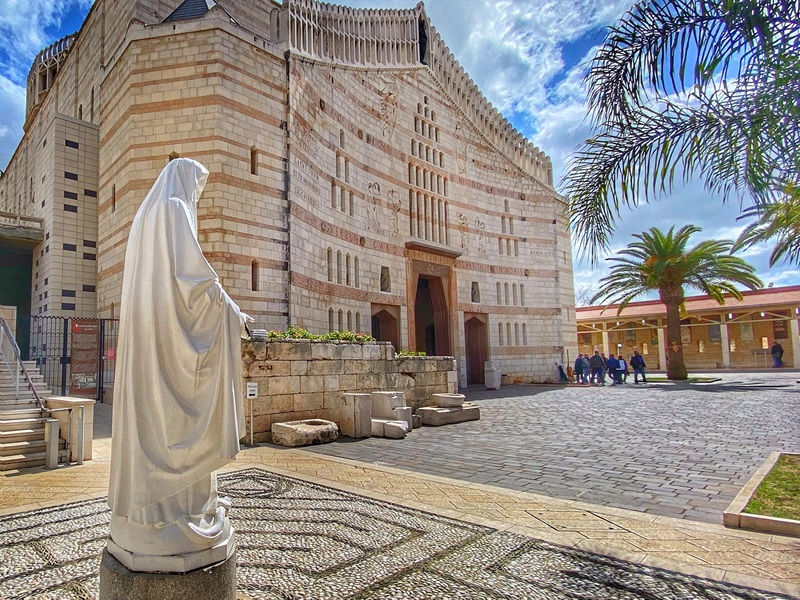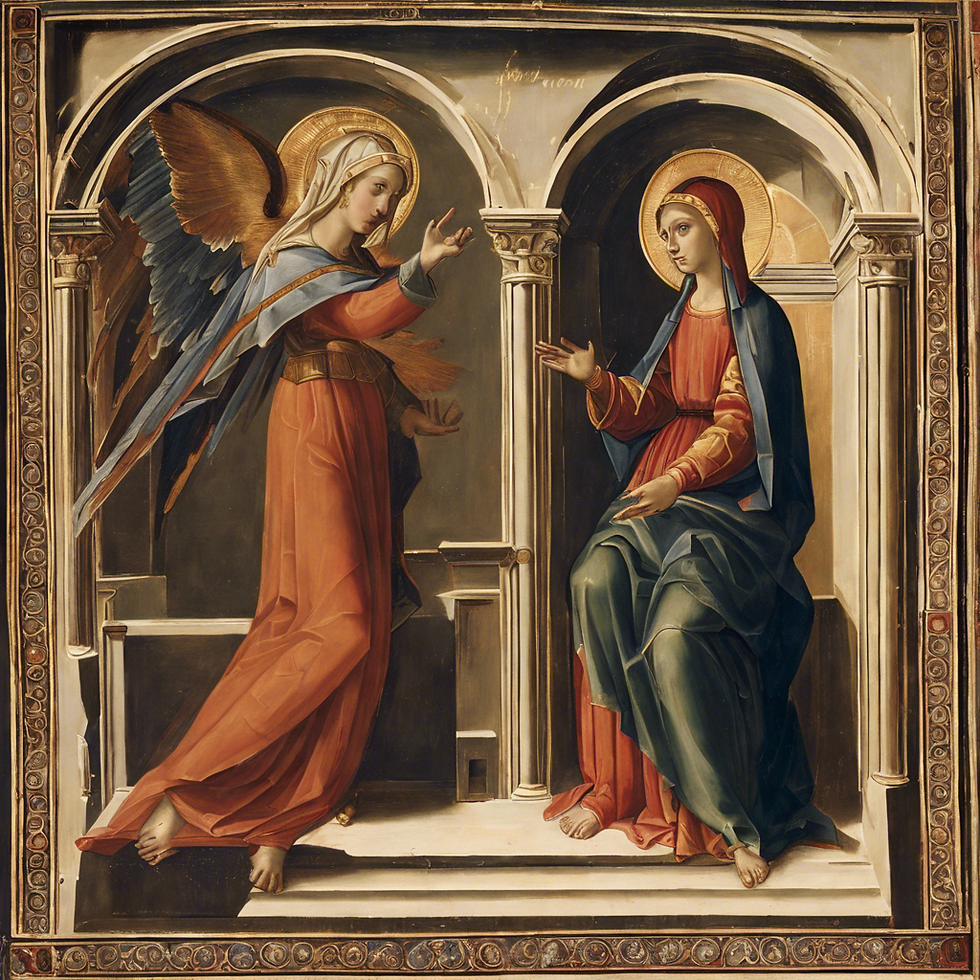FROM ZECHARIAH’S PARADIGM TO MARY’S MODEL
- Charles
- 23 déc. 2023
- 3 min de lecture
Reflections on the Fourth Sunday of Advent (2 Samuel 7:1-5, 8b-12, 14a, 16, Rom 16:25-27, & Luke1:26-38)

Did you know that the Gospel of Luke mentions two different annunciations? No, we are not speaking about the annunciation to Joseph for that occurs in the Gospel of Matthew. First, there is the annunciation to Zechariah (Luke 1:5-23) foretelling the birth of John the Baptist. And then there is the annunciation to Mary (today’s Gospel) announcing the birth of the Son of God.
There are some interesting similarities between these two annunciations:
Both Zechariah and Mary are “troubled” when the angel Gabriel appears to them (1:12, 29);
The Angel reassures them with a similar response, “Do not be afraid” (1:13, 30);
Zechariah and Mary receive the name of their future sons (John and Jesus) from the Angel (1:13, 31);
The Angel makes a common declaration about both their sons, “he will be great” (1:15, 32);
Both the annunciations mention the Holy Spirit (1:15, 35);
Both Zechariah and Mary pose questions (1:18, 34); and
Zechariah and Mary sing canticles exalting the Lord (1:68-79; 1:46-55)

Despite these common elements, there is still a stark contrast between these two annunciation episodes.
The annunciation to Zechariah takes place in the temple, in the Holy of Holies, to a priest. The annunciation to Mary takes place in a remote village called Nazareth to a laywoman betrothed to marry a carpenter.
Zechariah doubted the feasibility of what he heard from the Angel Gabriel and needed explanations. He asks, “How can I know that this will happen?”. Mary’s question, ‘How can this be?’ was not so much a question about the feasibility of the revealed message but an expression of her bewilderment as to how this would come to pass. That is why the Angel declares that Zachariah “did not believe” (1:20), while Elizabeth attests that Mary “believed in God’s promises” (1:45).
Zechariah’s unbelief renders him mute, and it was only after the birth of John that “his mouth was opened and his tongue freed” (1:64) so he could sing his Canticle. Mary, on the other hand, never lets her astonishment overshadow her faith. Thus, she can reach out to her cousin ‘immediately’ and break into a song at her place.

In the contrast between the two annunciations, Luke beautifully demonstrates:
A change of era (from the Ancient to the New Testament);
A change in ‘saintly’ vocation (from priestly power to servanthood);
A change of the ‘sacred’ space (from the Holy of Holies to an obscure village); and more importantly, a change in the manner of living our discipleship (service, thanksgiving, and transformation).
Mary remains the best example of this change. Her style of discipleship believes in taking the ‘least desired’ place of service. Her model is one of wonder at the providential love of God and His ways. Her style involves praise (Magnificat) for what is happening to her and living in a state of permanent celebration. Mary’s genre of discipleship does not stop with inspiring the transformation of others (Elizabeth), but also letting oneself be transformed by other’s experiences. She transforms and also lets herself be transformed. Her fiat abolished the distance between her and God and allowed God to bridge the chasm between divinity and humanity.

This Fourth Sunday of Advent is an opportunity to prepare ourselves to live the mystery of the Incarnation in our individual and collective lives by carefully emulating Mary’s style of discipleship. In the first reading, David wants to reduce the distance between his ‘house of cedar’ and God’s ‘tent’ and so proposes to build a temple. God, however, wishes that he followed the Marian way instead: to realise the power of God’s providence (that changed a shepherd boy into a king), His accompaniment (which established his kingdom in front of his enemies), and His promise (to be a father to his heritage). The liturgy invites us to do the same so we can abolish the distance between us and God and the walls that keep us apart. Mary’s style of discipleship offers us an alternative mantra: trusting in God’s promises, offering oneself unreservedly, visiting the ones awaiting us in the hilly regions of Judah and shortening distances. Let’s make this Marian style of discipleship our mission.




Commentaires